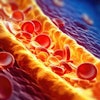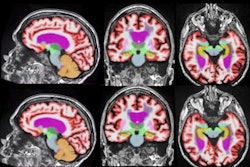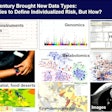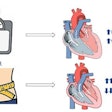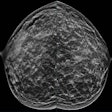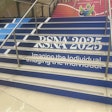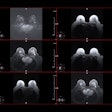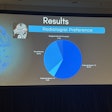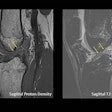Dear AuntMinnie Member,
Long hours spent in the radiology reading room can lead to physical problems for radiologists, including debilitating neck and back pain. Although many external factors such as increasing workloads or turnaround expectations by referring providers can't be controlled, there are many variables that can be optimized, such as ergonomics and equipment setup.
In a session at last week's Society for Imaging Informatics in Medicine (SIIM) annual meeting in Orlando, FL, presenters shared, for example, how imitating Han Solo from the Star Wars movies could increase productivity while decreasing physical strain.
Our coverage of the research at SIIM 2022 was the most widely read article on AuntMinnie.com this week and you can access it in our SIIM 2022 RADCast.
SNMMI Image of the Year
The Image of the Year award is always a hotly anticipated event at the annual meeting of the Society of Nuclear Medicine and Molecular Imaging (SNMMI). A group of researchers from Hannover Medical School in Germany were this year's winners for their work on PET imaging that reveals poor outcomes in patients after a heart attack.
In other coverage from SNMMI 2022, researchers highlighted the potential of the latest digital whole-body PET/CT scanners for improving clinical practice in nuclear medicine, particularly for children. Also, an artificial intelligence (AI) algorithm shows potential as a tool for long-term tracking of patients receiving treatment for neuroendocrine cancer.
What's more, PET/CT can evaluate lung inflammation and monitor treatment effects in patients with post-COVID-19 infection. And F-18 fluoroestradiol-PET/CT can be useful in detecting clinically significant breast cancer.
You can view these and other stories in the Molecular Imaging Community.
Blood clots from COVID vaccine
A majority of patients who have developed vaccine-induced low blood platelets after receiving the AstraZeneca COVID-19 vaccine have blood clots that are missed on clinical assessment. But whole-body imaging -- either on CT, MRI, or ultrasound -- can detect these previously overlooked clots, according to a recent case study.
Researchers from the U.K. concluded that these whole-body imaging results can enable early referral to specialist vascular or hepatobiliary centers. Learn more by visiting the MRI Community.

